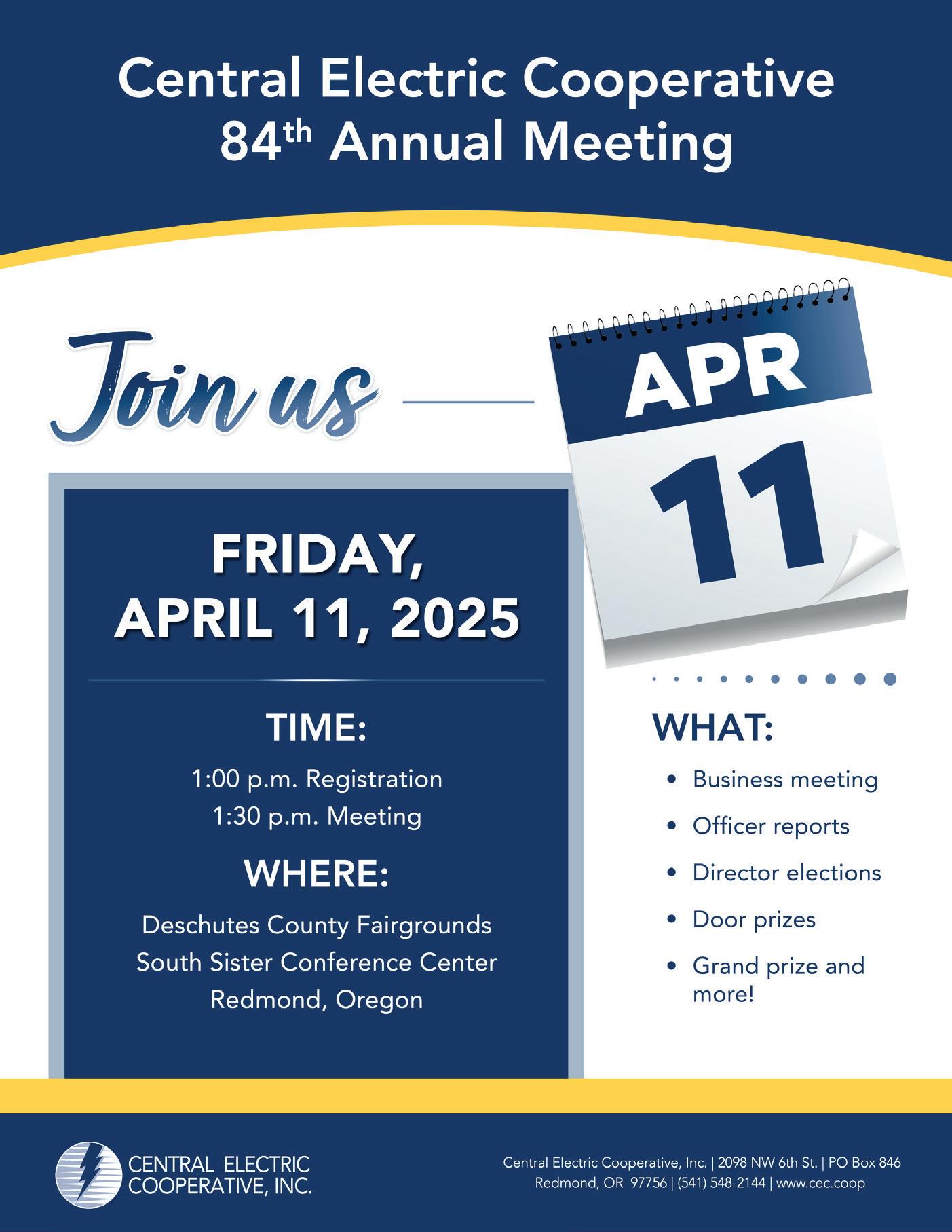
Manufacturing Program
Develops the Next Generation of Workers
Energy-Efficiency Rebates Can Help You Save Money






























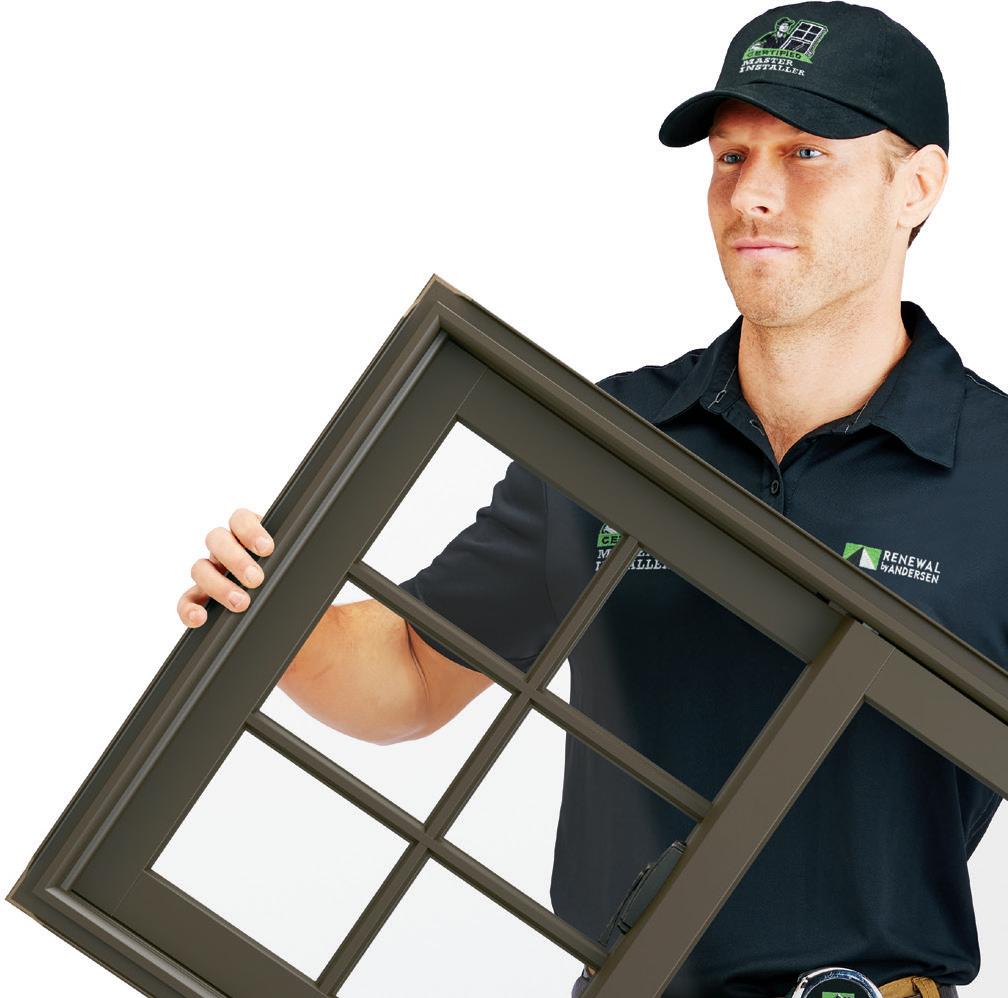



Manufacturing Program
Develops the Next Generation of Workers
Energy-Efficiency Rebates Can Help You Save Money
































April 2025 • Volume 72, No. 4
CEO Michael Shepard
SENIOR VP OF CONTENT Leon Espinoza
EDITORIAL DIRECTOR Chasity Anderson, CCC
DEPUTY EDITORIAL DIRECTOR
Noble Sprayberry
SENIOR EDITOR Jennifer Paton, CCC
ASSISTANT EDITORS Victoria Hampton, CCC; David Herder, CCC; Sable Riley, CCC
ASSOCIATE EDITORS
Valeri Saldanha Rosa, Nina Todea
PUBLICATIONS PRODUCTION SR. MANAGER
Elizabeth Beatty
SENIOR PUBLICATIONS COORDINATOR
Alyssa McDougle
Ruralite (USPS 397-460) is published monthly for members for $5.43 per year, plus postage, by Pioneer Utility Resources Inc., 5625 NE Elam Young Pkwy. Ste. 100, Hillsboro, OR 97124—a not-for-profit Oregon cooperative corporation—to serve the communication needs of 46 consumer-owned electric utilities in Oregon, Washington, Alaska, Idaho, Nevada and California. Preferred periodical postage paid at Hillsboro, Oregon, 97123 and additional mailing offices. © 2025 Pioneer Utility Resources. All rights reserved. Reproduction in whole or in part without written permission is prohibited.
Postmaster: Send address changes to Ruralite, 5625 NE Elam Young Pkwy. Ste. 100, Hillsboro, OR 97124-6454
HOW TO CONTACT RURALITE
Subscription services:
Nonmember subscriptions $15 (U.S.) per year; $25 per year (foreign). Prepayment required. Allow 4-8 weeks for first issue. Be sure to identify which local edition you want to receive.
Address Changes:
Utility members, contact your local utility. Subscribers, call us at 503-357-2105 option 3 or email mailingdept@pioneer.coop.
Back issues:
Back issues and extra copies $3. Prepayment required. Supply is limited. Be sure to identify edition, month and year. Call first if ordering back issues to check availability.
To contact Ruralite: Ruralite magazine is published by Pioneer Utility Resources.
P.O. Box 1306, North Plains, OR 97133-1306; 503-357-2105; email: info@pioneer.coop. For more information, visit www.pioneer.coop.
DISPLAY ADVERTISING INQUIRIES
American MainStreet Publications
611 S. Congress Ave., Ste. 504 Austin, TX 78704
800-626-1181 or 512-441-5200
Flipping through our April edition, I’m struck by the sheer amount of “doing” happening in our communities.
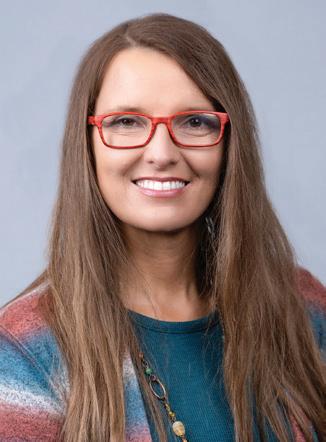
Our Easter Sunday dinner feature isn’t just about food—it’s a practical approach to creating a memorable meal without unnecessary fuss. These recipes are straightforward and delicious, which is why they deserve a spot on your table this month.
The Sisters Outdoor Quilt Show, now marking its 50th anniversary, demonstrates how practical skills can transform into community events with a real economic impact. What began as a teaching necessity has evolved into an annual celebration that brings $1.7 million to a smalltown’s economy. That’s not just tradition. That’s impressive community development.
Speaking of action, our “Beyond Barriers” feature highlights organizations tackling accessibility head-on. These aren’t just feel-good stories—they’re examples of problem-solving at its finest. When faced with the challenge of making outdoor recreation accessible, groups like Oregon Adaptive Sports and David’s Chair didn’t just talk about inclusion—they engineered solutions with tangible results. As David’s Chair
Founder Steve Furst puts it, they “fumbled through” and figured it out.
Even Dave LaBelle’s piece on rainbow photography offers practical advice: Keep your camera ready as storms clear, use interesting foregrounds and be prepared to capture fleeting moments.
What ties these stories together is action— people identifying gaps and taking steps to address them. From Jean Wells opening a quilt shop because her students lacked materials to Bill Greenwood developing accessible water entry points after hearing about someone struggling, our communities are full of doers.
As you read this month’s issue, I hope you are inspired not just to appreciate these stories but to look around your own community. Where are the gaps you might help fill? What practical skills could you share? Sometimes, the most meaningful contributions start with acknowledging we can do better and then asking, “What’s a solution?”
Do you know any stories of “doing” you think should be showcased on the pages of Ruralite? I’d love to learn more. Reach me at editor@pioneer.coop.
Until next time, Chasity Anderson Editorial Director

For supplemental and interactive content, search @Ruralite on your favorite social media sites.
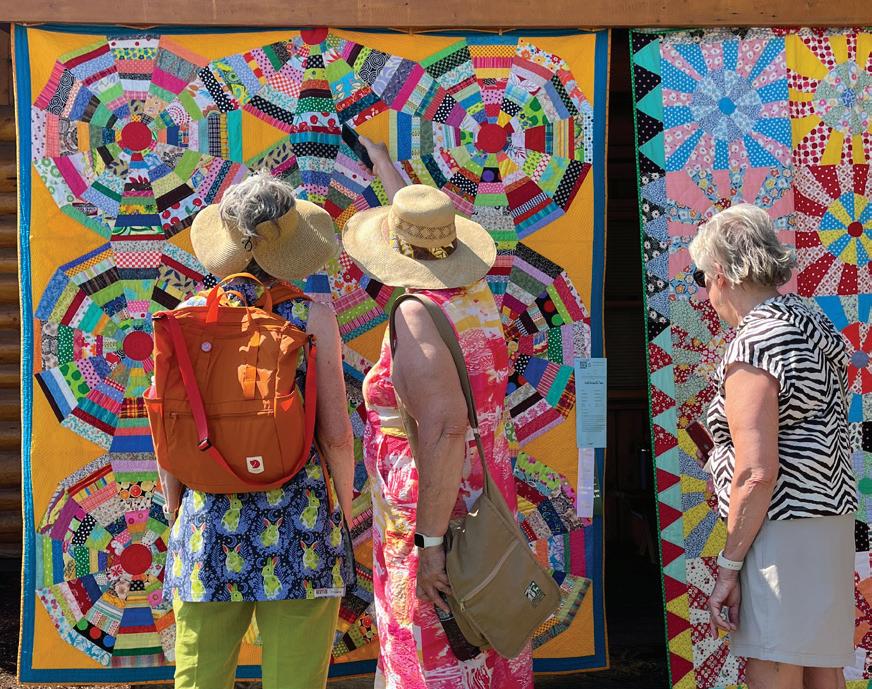
The Sisters Outdoor Quilt Show marks 50 years Up Close, Page 10
Innovative organizations make the great outdoors accessible to all Spotlight, Page 12
In The Kitchen, Page 16
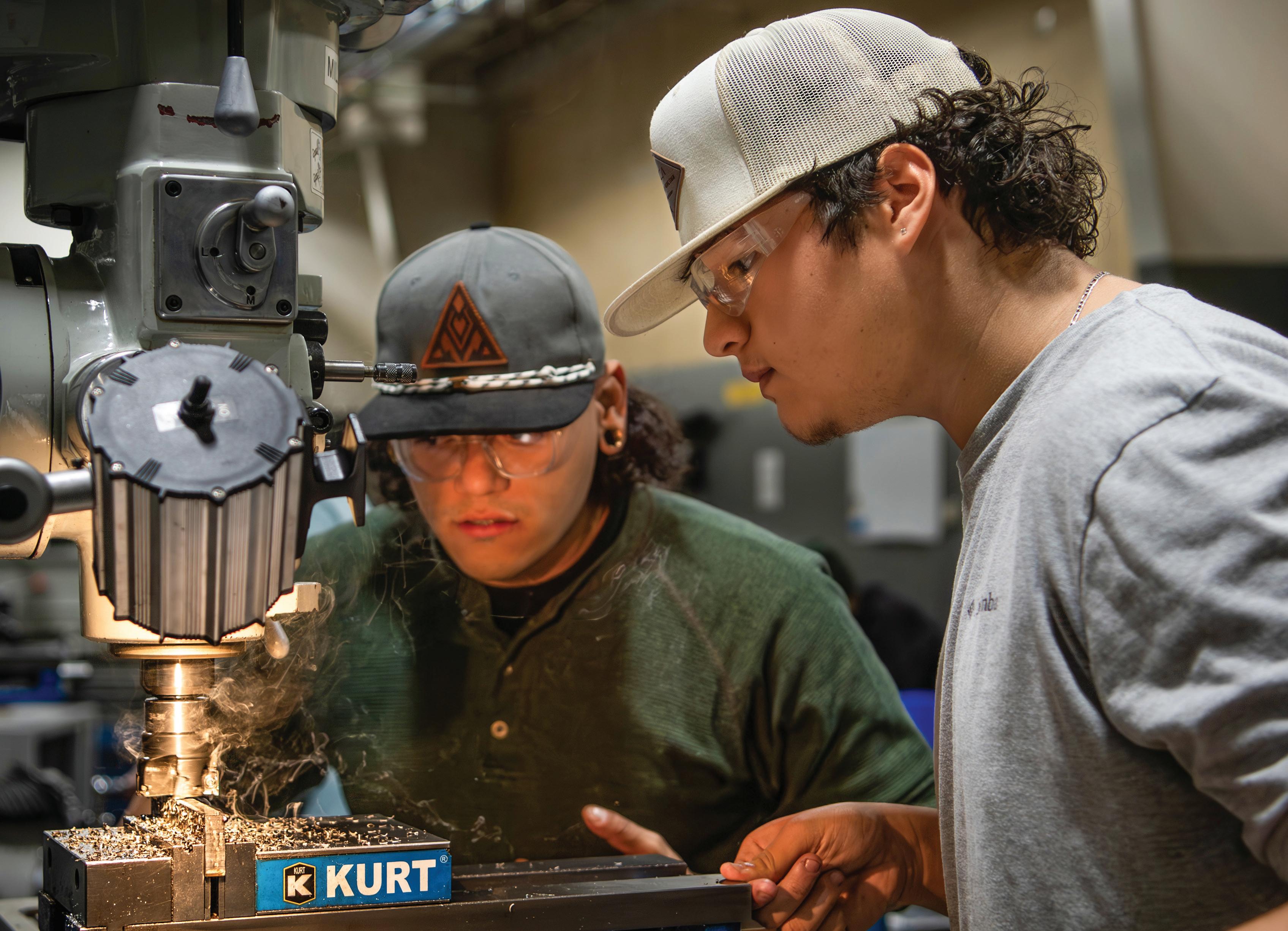
By Courtney Cobb
These are exciting times for the Manufacturing and Applied Technology Center, housed on Central Oregon Community College’s Redmond campus.
After successfully revamping its program to more effectively train a skilled workforce ready to meet Central Oregon’s employers’ needs, the center will soon embark on a capital project to renovate and expand its facility.
“Our program exposes students to a variety of manufacturing processes, including CNC (computer numerical control) machining, welding, additive manufacturing, quality assurance and computer-aided design,” says Gabriel Franco, COCC assistant professor of manufacturing. “What that means is
local manufacturers are getting employees who are trained up in these trades, and they start off in better situations than just entry-level positions.”
COCC’s manufacturing technology program develops the next generation of workers and provides access to students looking to learn a trade or add to their skill set.
Brian Keechle, COCC assistant professor of welding, says not everyone sees themselves in a management or white-collar position. The college can provide students with the skills necessary to build their confidence before entering the manufacturing industry.
“It opens up the doors for a broader base of community members to be able to gain employability skills that are going to help them out not only financially but also give them a sense of pride in our community,” he says.
The program completed substantial changes over the last few years, including the self-paced, self-study style of coursework. The coursework is now designed to reflect what local businesses need.
“It’s trying to keep up with industry and what our students need to learn so that they can enter the workforce ready to make an impact for their employers,” Gabriel says.
The program features a dedicated team of instructors with courses designed around accountability, understanding concepts, mastering skills and more.
“Scheduled instruction and employability skills are embedded throughout the program because students are expected to reflect the behaviors needed to be
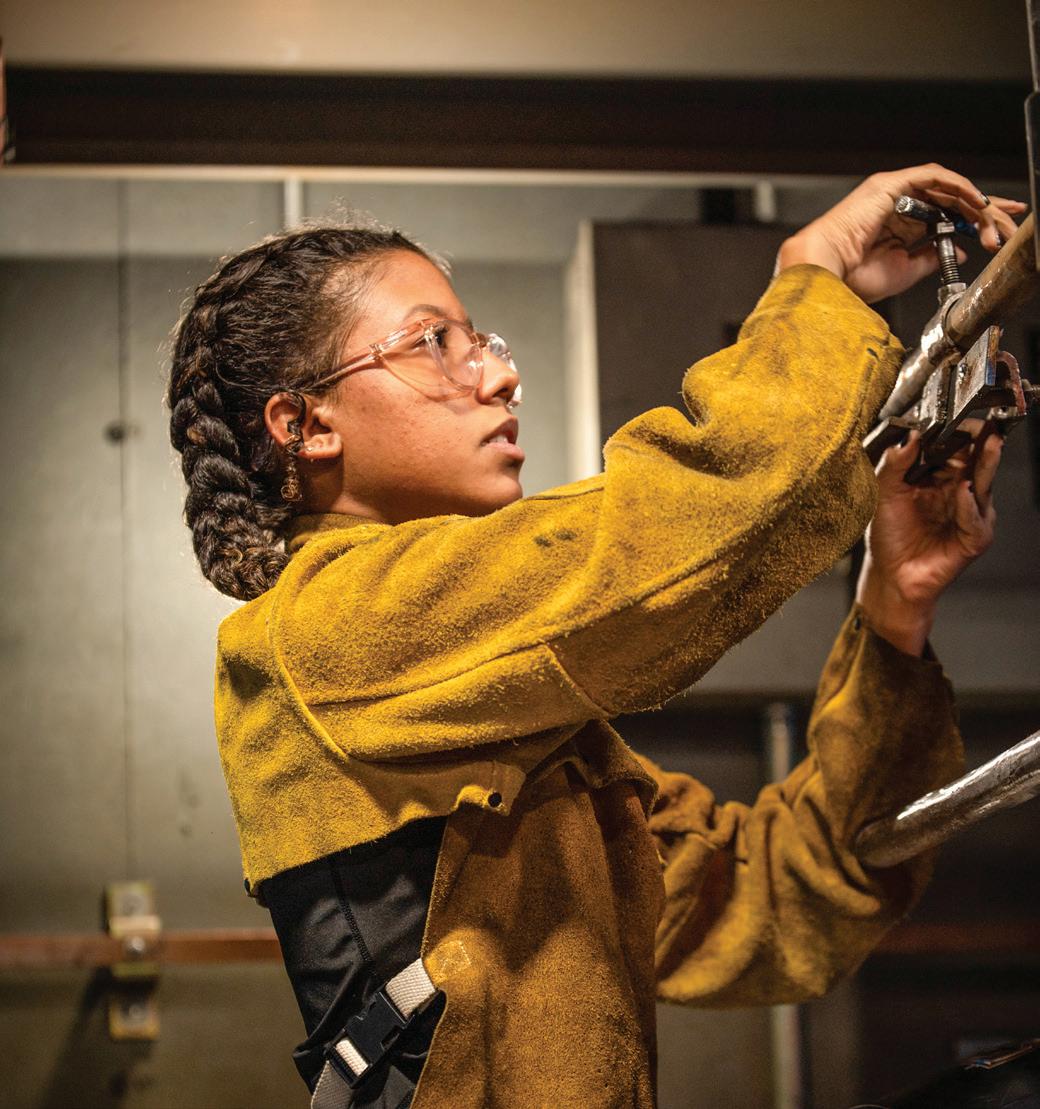
successful in the workplace,” says Amy Ward, COCC Redmond campus director and manufacturing technology program director. “They spend time in the classroom with traditional lecture followed by time in the lab with project-based learning.”
Brian underscores that while the program requires academic rigor, it also creates an environment for students to learn through trial and error.
“It’s a safe place to learn how to fail so that those failures don’t happen on the job,” he says. “Replicating real-life environments is one of our best learning tools.”
There are three different program tracts for students—a two-year degree with either a welding or machining focus, a one-year certificate and a career pathway certificate of completion.
“No matter the level, students can at least have some sort of foundational knowledge before they go out and start practicing the trade,” Gabriel says.
Whether the student completes one term or two years, the program’s framework allows flexibility to add on courses as the need arises.
“The idea here is that they go off into the workforce and get experience working in shops and out in the field, and then they come back and add onto this education and experience,” Gabriel says.
Who is the ideal target for this program? Brian says it can range from someone who wants to work on projects safely at home to someone who aspires to a career as a structural welder or fabricator, a CNC programmer, engine rebuilder and
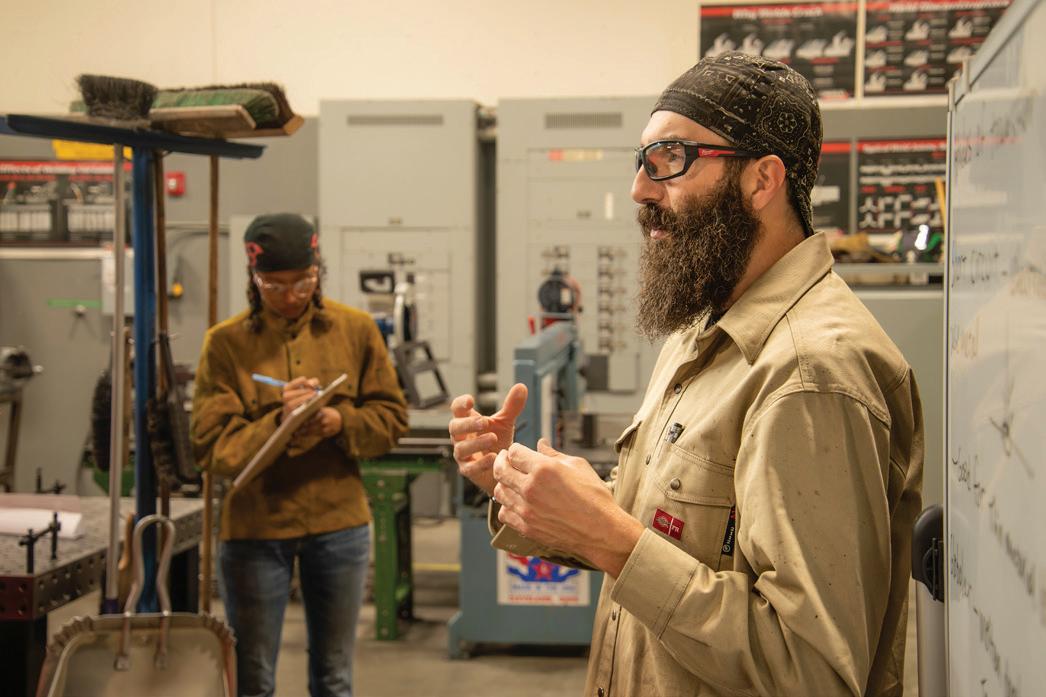
more. The current student body includes individuals aged 16 to 90.
“We have students from all kinds of backgrounds and demographics here, and we welcome them all,” Brian says.
With an influx of federal and state dollars, the Manufacturing and Applied Technology Center continues to improve its program and expand its facility.
COCC recently received the Strengthening Community Colleges Grant awarded by the U.S. Department of Labor. This grant provides funds over four years dedicated to new equipment, curriculum development and professional development for faculty.
According to Amy, the expansion project at the Redmond campus will cost approximately $8 million. The state legislature will provide $4 million, and COCC will match those funds with another $4 million from its capital project budget. Local architecture firm Steele Associates will design the new building, with construction set to begin in January 2026.
“The hope is to have the project completed by spring 2027,” Amy says. “Then we’ll take the rest of that spring and summer to furnish the space so we’re not disrupting students in the middle of their academic year.”
The strategic plan will also focus on recruiting and retaining diverse student populations throughout the region, from Warm Springs to North Lake and beyond.
With so much happening, how can the community get involved? Brian says the center is always looking for more faculty members.
“We know that there are folks out there that have thought about getting into education,” he says. “Maybe they have said, ‘I can teach welding,’ or ‘I can teach machining.’ And they can share their skills.”
COCC wants to connect with more local employers, too.
“We are seeking advice on how we should be putting a robust and wellrounded program together,” Brian says. “We need that information from the local industry to be able to build out our classes to where we’re going to be reacting in real time to what the industry needs. It’s definitely part of our educational adaptability that we want to expand on.”
Gabriel wants to hear more from community members about their needs and what suggestions they may have.
“That’s a fantastic way for us to be able to adjust our instruction and help guide our program into a direction that will ultimately better serve our community,” he says.
Amy adds that as the area grows and thrives, it creates meaningful work opportunities for the program’s students.
“The more we can make in our own community, the more we can produce here, the better we are,” she says. “And the need for skilled workers is just going to continue to grow as more business and industry moves into the area.” n
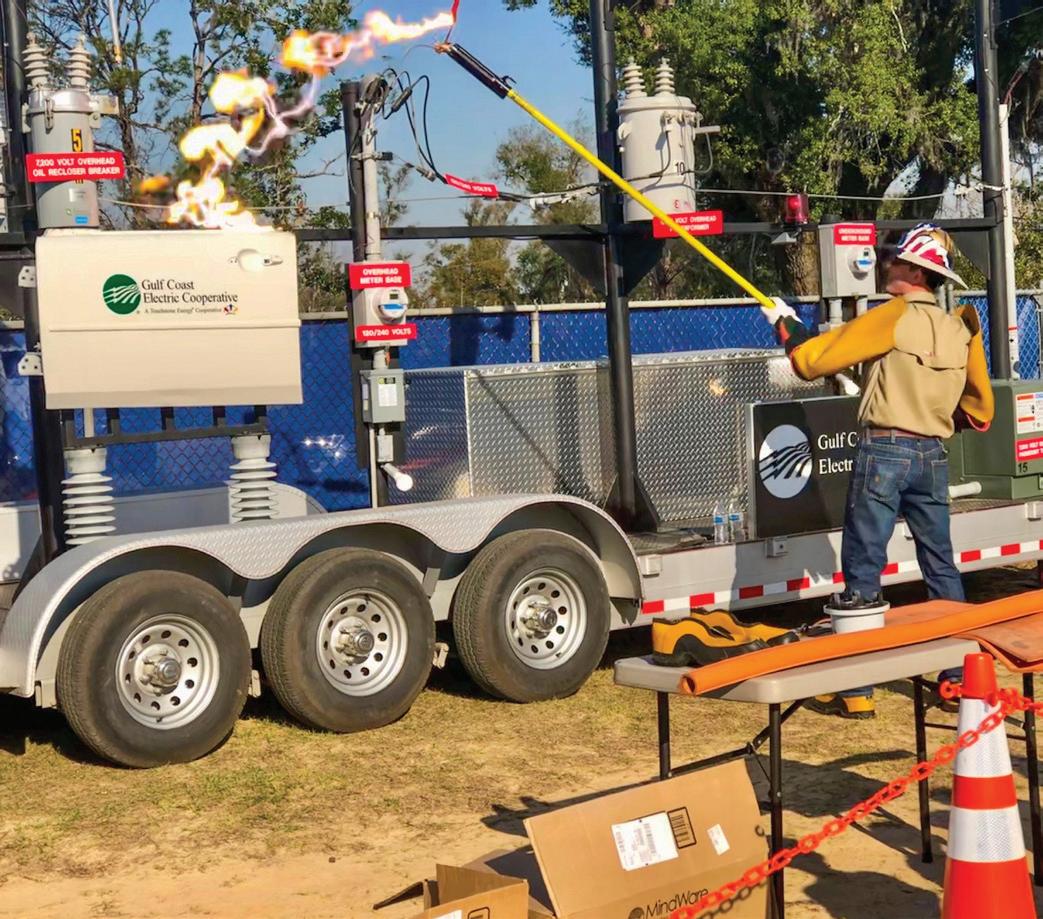
Nick remembers pulling up near a house to repair power lines one Christmas Eve.
“They had been out of power for days,” he says. “Once I finished, I remember seeing their Christmas lights come back on. I thought that was pretty cool.”
The pay is good, too, he says. Nick was making ends meet as a valet at a hotel when he first learned about the trade. He wanted a better life for his family, and linework fit the bill. It also gave him a chance at retirement.
“Getting a good job with a retirement where you could actually enjoy your life after work? Nobody had ever really talked about that to me,” he says.
While compensation and benefits vary for lineworkers depending on location, experience and other factors, the Occupational Outlook Handbook published by the U.S. Bureau of Labor Statistics reports the median pay in 2023 was $85,420 per year, or $41.07 per hour. However, those figures represent the middle of the pay range, and they don’t take into account overtime hours and additional jobs helping other utilities in the aftermath of storms—all of which can result in additional income.
Joining the trade means learning various—and oftentimes difficult—technical skill sets in and out of the classroom, all while maintaining a certain level of physical fitness, says David Bogue, a journeyman lineworker with Florida Keys Electric Cooperative.
Not only do lineworkers need to know how electrical systems work, they’re also required to learn numerous safety techniques. In addition, lineworkers climb utility poles wearing heavy toolbelts in all kinds of weather. The job requires working days and nights, depending on schedules and needs.
“Everybody’s story is a little bit different. Everyone gets into the trade in their own way.”
–EVAN PETERS, LINEWORKER AT BENTON REA IN WASHINGTON
“I would say becoming a journeyman is an attainable goal, but it’s a hard goal,” David says. “But, as someone once told me, I could throw a dart at a map and go get a job there. Also, the skills I’ve learned are not going to be replaced with AI anytime soon.”
Lineworkers can get their start by attending training schools, taking community college courses or working at a local utility in other capacities, such as a groundworker. Rudy Vega, a journeyman lineworker at FKEC, got his start doing right-of-way work with the cooperative 23 years ago.
“I had been working in a tree group there just under two years when the opportunity came up to be an apprentice lineman,” Rudy says. “They approached me and asked me if I was interested, and I said, ‘Definitely. I’ll give it my best.’”
Evan Peters, a lineworker at Washington’s Benton Rural Electric Association, was fighting wildfires when he first learned about the trade from a group of lineworkers.
When he expressed an interest in the job, one of the men suggested he attend a lineworker school. After graduating, he took a job at Benton REA.
“I like that it’s something new every day,” Evan says. “I like that I get to work outside with my hands, especially at a local utility. It can be really fulfilling.”
When it comes to joining up, however, Evan suggests those interested ask around before they jump in headfirst.
“I would tell them to reach out to local linemen,” he says. “Ask them how they did it. Everybody’s story is a little bit different. Everyone gets into the trade in their own way.” n
Must-haves:
X Be 18 years of age.
X Hold a high school diploma or GED.
X Maintain a valid driver’s license.
X Able to work at heights and lift heavy equipment.
Every lineworker has a story about how they got started, and there are many pathways to taking the job. Here are a few ways to make it happen:
X Join an apprenticeship program at a local utility.
X Enroll in a lineworker school or training program.
X Start at a utility as a groundworker or other job.

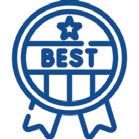



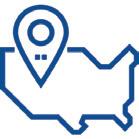


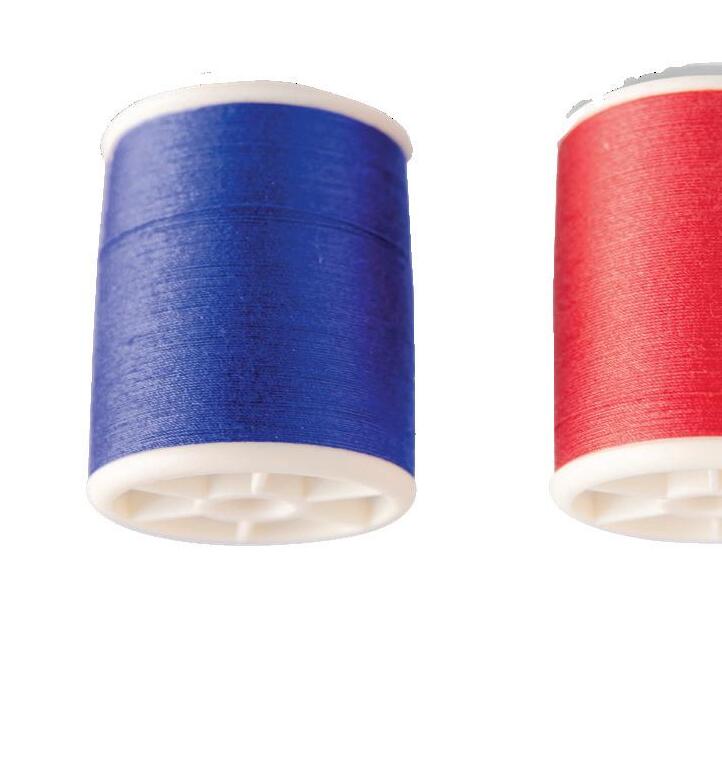
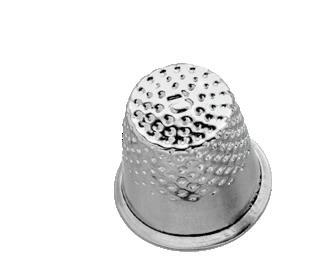
Great ideas, those that stand the test of time, often arise from necessity. Such was certainly true for Jean Wells, who moved to Central Oregon in the ’70s to teach home economics, only to discover her students didn’t have access to the necessary materials.
Jean opened The Stitchin’ Post quilt shop in downtown Sisters to address this need, but took the opportunity a step further. She displayed about a dozen of her family’s quilts in the shop to showcase the centuries-old tradition of creating textile art.
Her students and local businesses loved the idea, which evolved into a quilt show that grew every year. This year, the Sisters Outdoor Quilt Show celebrates its 50th anniversary. It’s considered to be the world’s largest outdoor quilt show—although organizers admit that’s a tough claim to prove. Around 1,000 quilts will be on display throughout the town July 12 as part of a show that includes children’s activities and special events.
“It’s organically grown over the years,” says Dawn Boyd, executive director of the nonprofit that runs the show.


The event attracts 10,000 visitors to the town of 3,000 residents. Even more remarkable is the tiny staff that produces the show. Dawn has help from a part-time staff member and a group of volunteers ranging from a few people throughout the year to about 300 on show day. The annual economic impact the quilt show has on Sisters is estimated at $1.7 million.
“It’s so much fun, and you meet so many people from everywhere,” Dawn says.
Hundreds of quilts—items from Jean’s personal collection and those belonging to quilting teachers and students worldwide— are installed early in the morning throughout downtown Sisters. Admission to view these masterpieces is free.
“They’re all over town, like three blocks by seven blocks,” Dawn says. “There’s also a city park we take over.”
Local firefighters get in on the act, hanging quilts on the side of The Stitchin’ Post building. Visitors and residents love to watch the proceedings.
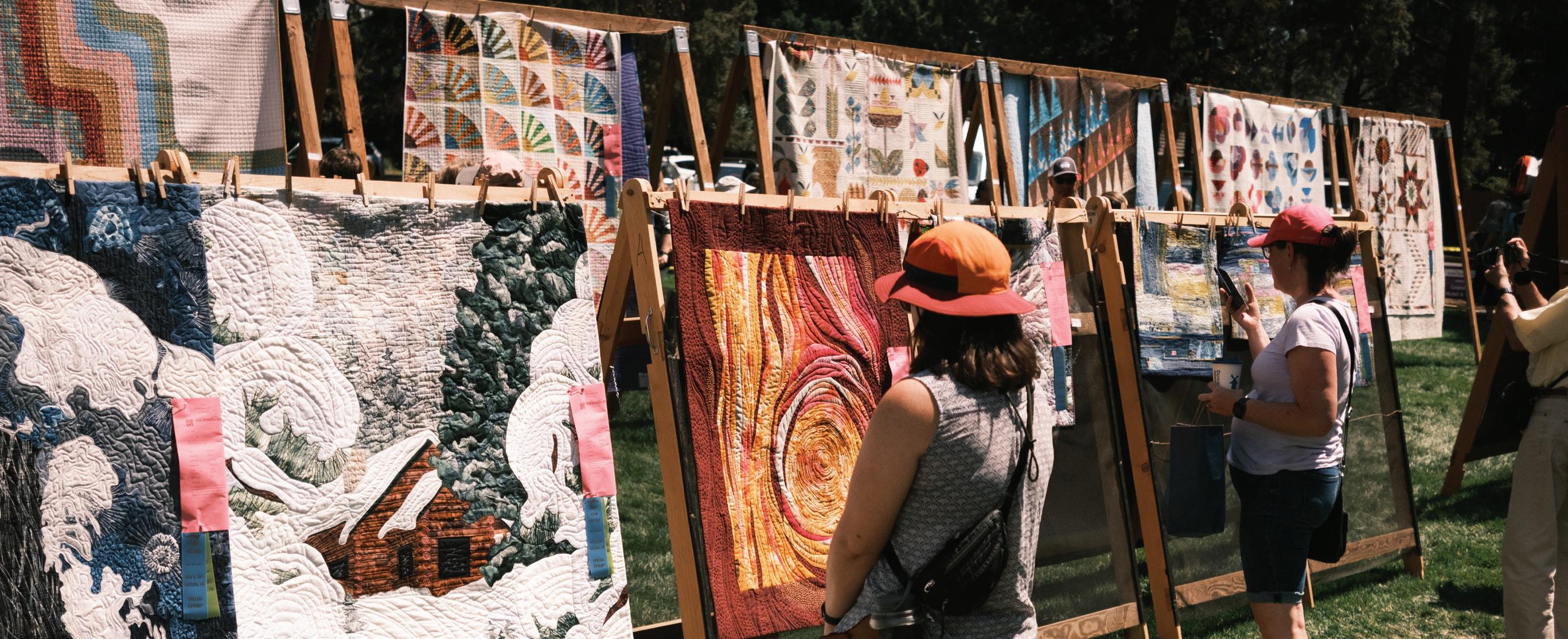

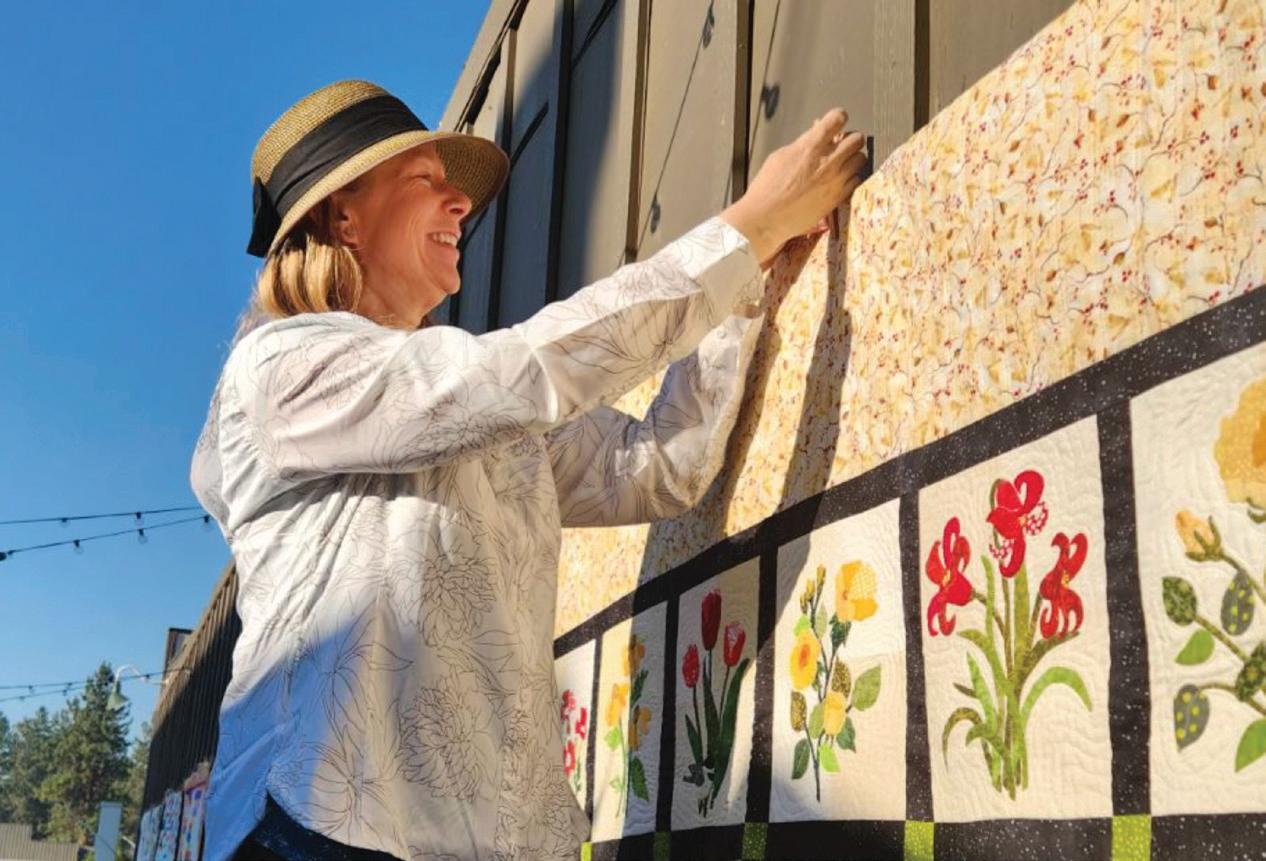
“It’s a highlight for some of our visitors,” Dawn says with a laugh. “They get a coffee, then they watch the firemen in action.”
This year, the quilts displayed on The Stitchin’ Post wall will be a log cabin pattern created by the shop’s employees. In addition to the quilts around town, children are invited and encouraged to make their own fabric-based crafts at the Kids Activity Center.
“It’s neat to show them how colors can go together,” Dawn says.
Quilters have a chance to use their talents to produce their own fabric postcards. The 19th annual Wish Upon A Card fundraiser challenges participants to create a 4-by-6-inch quilted art piece— called a postcard—using two fabrics designed by Giucy Giuce, a business run by designer Giuseppe Ribaudo. Contestants can create a similar postcard highlighting the 50th anniversary of the show. Winners receive quilt show goody bags.
Sales of both juried and nonjuried postcards help raise funds for an SOQS scholarship given to local high school graduates entering a collegiate fabric arts or design program.
“People love them,” Dawn says of the postcards.
Quilters can also compete for prizes in the Quilt Block Contest featuring the fabrics of sister quilter Kathy Deggendorfer’s Sisters Mountain Meadow collection. Each packet contains six fabric squares to build a finished 9.5-by-9.5-inch block. The first-place winner receives a cash prize, and honorable mentions are awarded additional fabrics.
For more information about the contests, visit soqs.org/contests.
Jean offers Quilters Affair—quilting classes led by teachers from around the world—the week before the show. The list of classes, held at The Stitchin’ Post, is announced in December, and many visitors make plans immediately. Accommodations in Sisters fill up fast.
“It’s a huge event for them, coming from all over,” Dawn says.
On Friday, July 11, Jean and her daughter, Valori Wells, a quilter in her own right, discuss the show’s history at an event called “A Town Covered in Quilts” at Sisters High School.
On Sunday, award-winning Dallas quilter Karen K. Stone offers walking tours at 9 a.m. and 1 p.m. and a lecture at 10 a.m. at FivePine Lodge Conference Center. Karen’s quilts have nabbed awards in international competitions, and her Indian orange peel
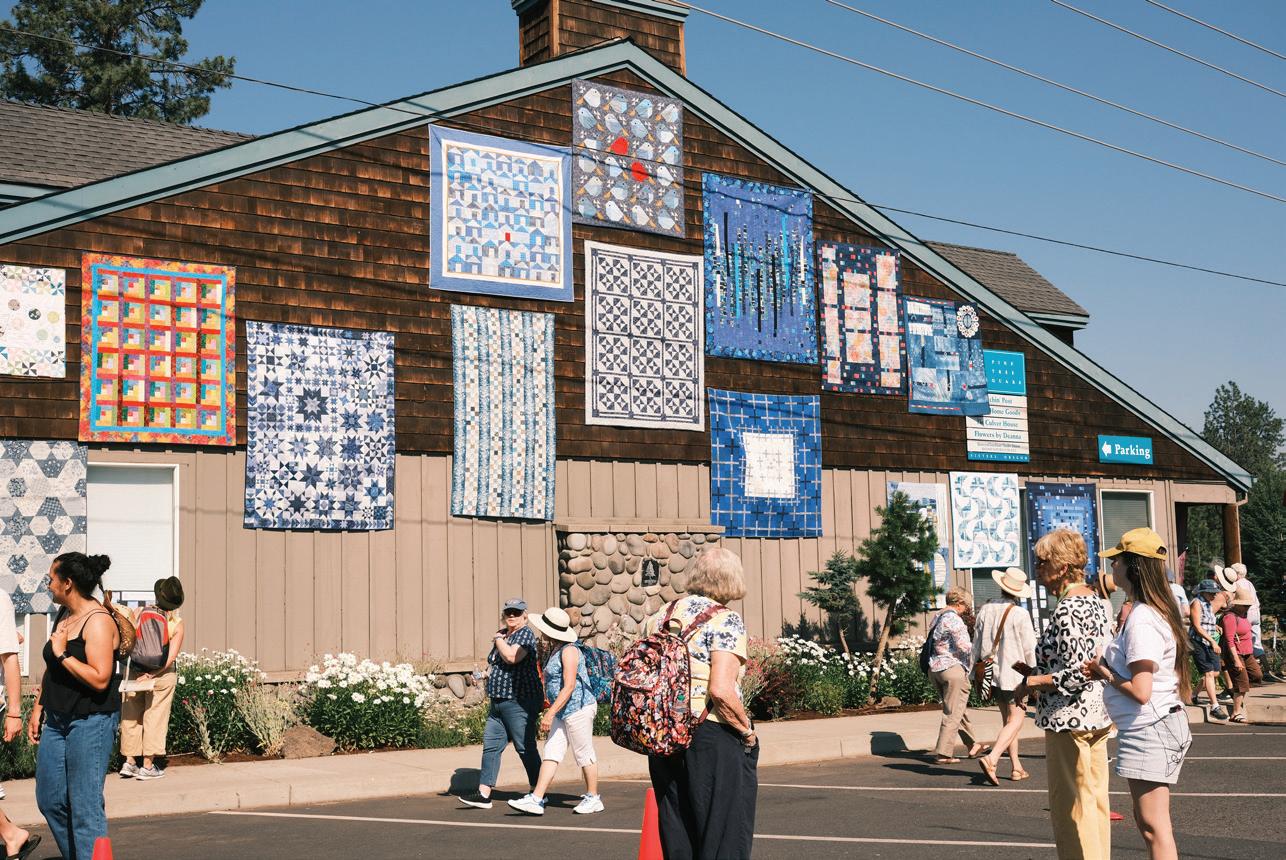
quilt is now part of the Quilt National Collection at the International Quilt Museum in Lincoln, Nebraska. There is a cost to attend both events, but visitors are free to enjoy Karen’s quilts on display from 10 a.m. to 2 p.m. along the creek at the conference center.
A raffle of a special 48-by-84-inch quilt raises more funds for the show. Valori designed a Sisters Scape pattern years ago, and Donna Rice and Jean reimagined the design in a piece they named “Sisters Scape Reimagined 2025: Celebrating the 50th anniversary of the Sisters Outdoor Quilt Show.”
The raffle quilt includes the iconic Three Sisters mountains, from which the town got its name, along with wildflowers, Ponderosa pine trees and Whychus Creek. June Jaeger recreated the design of the creek and its fish, while Donna, Jean, Jan Tetzlaff, Janet Roshak and Diane Jaquith pieced the remaining blocks and assembled the quilt. Annette Caldwell finished the quilt with machine quilting. Raffle tickets cost $5, and the winner is announced on show day.
As the show grew from its start in 1975, Jean created a nonprofit and handed over the reins, although she is still on the show’s board and is active in the annual event.
“She’s retired but still involved in everything,” Dawn says, adding the nonprofit show and its founder “are entwined like a bowl of spaghetti. We are separate but together.”
Like Jean, Dawn came to Sisters out of necessity. She and her family moved to coastal Oregon from Southern California but veered to Sisters after what Dawn calls a “midlife misdirection,” and a new college degree made her realize she longed for a career in event planning. The job of executive director emerged, and when she approached her husband about moving to Sisters, she learned it was his dream to live in Central Oregon.
Her mother, an active quilter, was pleased as well.
“I had quilted before,” Dawn says, but gave it up while raising a family. “Obviously, living here, I picked it back up.
“I didn’t have a choice,” she says with a laugh. n
For more information on the Sisters Outdoor Quilt Show, visit soqs.org.

By Ginger Meurer
Extending recreation and athletic opportunities to people of all abilities is the mission of adaptive sports and other organizations throughout the West. Accessible beaches, parks, trails, waterways and adaptive equipment allow participation for people who might otherwise be unable to enjoy these experiences. Here’s a small sampling of these inclusive efforts.
Oregon Adaptive Sports offers professional outdoor experiences supported by more than 350 volunteers and 30 certified instructors, catering to participants of all ages and abilities. It also provides access to state-of-the-art adaptive equipment.
“We have a fleet of sit-skis, adaptive mountain bikes and adaptive cycles,” says Executive Director Pat Addabbo.
He says Oregon is an ideal setting for outdoor activities.
“It’s a great place to come test out different types of equipment and to enjoy the hundreds of miles of trails that we have access to here. It’s a just a great place to get out and ride a bike.”
Oregon Adaptive Sports taps adaptable transportation to make sure athletes can easily reach activity sites. Affordability is at the heart of all the nonprofit’s offerings.
“We have a robust scholarship program,” Pat says. “We never turn
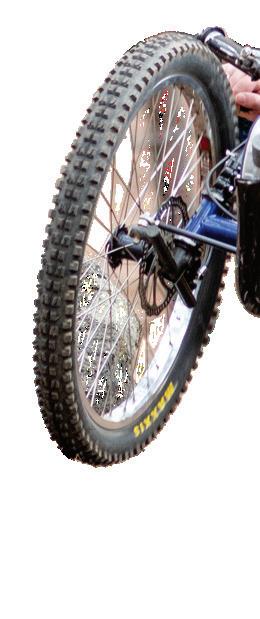
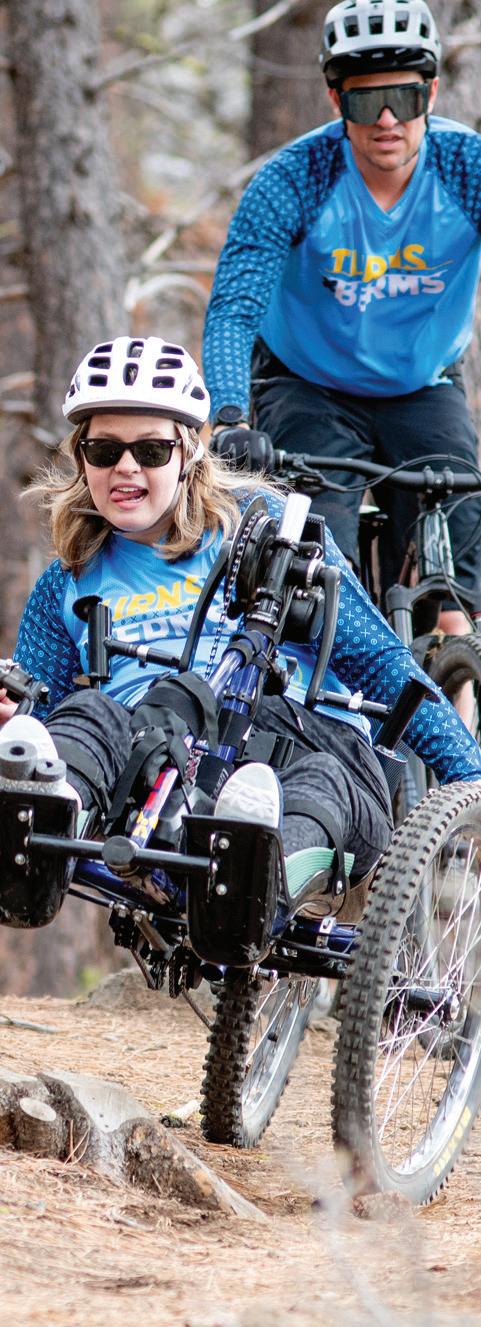

Families explore Oregon’s beaches using tank-like track chairs provided by David’s Chair. At top, adventurers enjoy Harris Beach in Brookings during a 2023 spring break excursion. Below, a family takes in the sights at Cape Kiwanda in Pacific City, Oregon, also in 2023. PHOTOS COURTESY OF DAVID'S CHAIR


wheel herself to the sand, throw herself out on the ground and crawl to the river’s edge.
“I said, ‘Well, we’ve got to do better than that,’” says Parks and Recreation Director Bill Greenwood.
He worked with an engineer and the Post Fallsbased Idaho Disability Action Center to develop an accessible swim entry point on the beach at Atlas Mill Park. Resembling a boat launch, the ramp allows wheelchair users to roll themselves into the water, secure their chairs and swim off on a flotation device. The same location also features an accessible kayak launch, dog park and picnic area.
For more information on the Idaho Disability Action Center, go to dacnw.org. Details on Atlas Mill Park are at cdaid.org/5883.
Along the Oregon coast, communities offer accessible kayak launches and mobility mats known as Mobi-Mats—portable, durable pathways laid out seasonally to facilitate beach access. Some municipalities also loan out Mobi-Chairs, floating beach wheelchairs.
Lincoln City provides beach wheelchairs on a firstcome, first-served basis year-round. From Memorial Day through Labor Day, the city rolls out mobility mats at multiple beach access points. To reserve a chair, go to explorelincolncity.com/wheelchair.
Visitors to San Diego will find accessible mats at Moonlight Beach and beach wheelchairs at Newport Beach.
Go to traveloregon.com/things-to-do/trip-ideas-accessible-travel for accessible travel ideas in Oregon. In San Diego, find details at sandiego.org.
The Grand Canyon’s South Rim offers barrier-free experiences. Departing daily from Williams, Arizona, the Grand Canyon Railway's trains feature accessible seating in coach and first class. The South Rim also offers several wheelchair-accessible viewpoints, paved scenic trails like the Rim Trail and shuttle buses equipped with lifts.
Learn more at thetrain.com/the-train and grandcanyontrust.org/ hikes/cpe-grand-canyon-rim-trail.
When David Hartrick was diagnosed with ALS, the Oregon outdoorsman was determined to seize the time he had left. But how do you hunt, hike or fish when you can’t leave the pavement? The answer was an all-terrain track chair, essentially a one-person tank. Facing a $20,000 price tag that his insurance company wasn’t willing to cover, David turned to his buddy, Steve Furst.
“It was stumble and bumble and find our way,” Steve says.
“We raised money for the one chair, and we had some leftover, so we bought a youth chair, also.”
Steve credits David with the plan to share the chairs.
“It goes back to his insight and his vision,” Steve says. “He talked about giving the chair to somebody else. ‘You give it to somebody, and one person gets in the chair a few times a year, maybe. But, hey, what if we come up with a plan so anybody can use the chair?’ And then we just fumbled through the nonprofit stuff and put it together.”
On Jan. 11, 2018—only 11 months after his diagnosis—David died, leaving behind a growing legacy. With Steve as CEO, David’s Chair now manages 23 track chairs and three golf chairs available for free to people with mobility challenges.
Partner organizations and volunteers manage the chairs at fixed locations like beaches, golf courses and trails. Most of the chairs are at Oregon beaches, but reservable chairs are also available in the California Redwoods, at the Rosewood Nature Study Area in Reno and Ten Mile Ranch in Texas. Tow ’N Go chairs also allow users to enjoy independent outdoor adventures.
Steve sees familiar names come through the reservation system that serves just under 1,000 people annually.
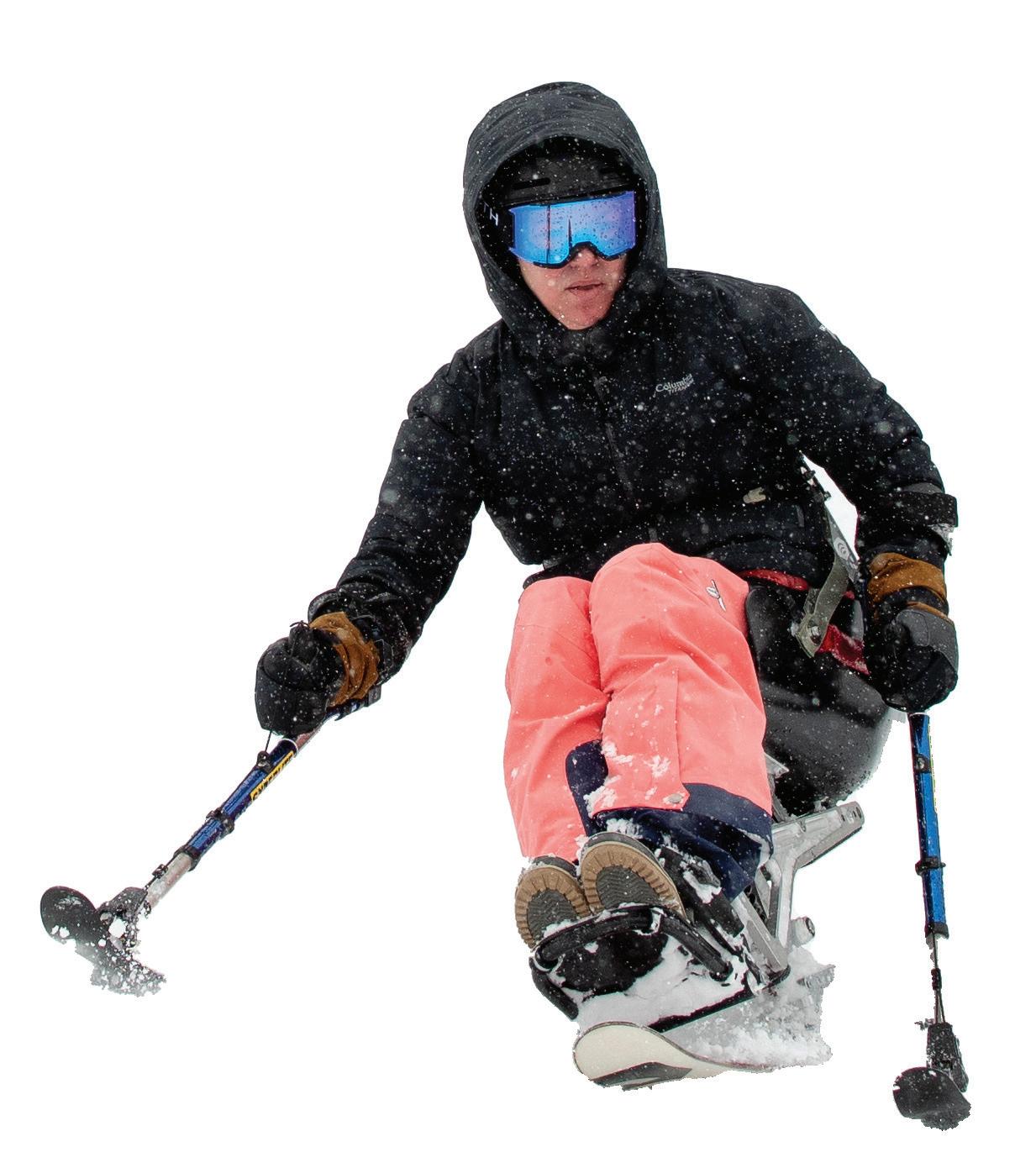
“There’s about three or four that regularly will go up and down the coast enjoying it, and that’s awesome,” he says.
Learn more about the nonprofit or reserve chairs at davidschair.org.
All abilities and ages are served by the Oregon-based adaptive and inclusive outfitter Adventures Without Limits. The organization hosts private groups and community trips, and, in winter, it leads snowshoeing and cross-country skiing trips.
Participants with ambulatory challenges participate on sit-skis. Spring through fall, there are more outdoor activities.
“We raft, kayak, canoe, paddleboard, hike and camp—a little bit of rock climbing, as well,” Director of Outreach and Development Jennifer Wilde says.
Using adaptive equipment, patience and sometimes a bit of foam, duct tape and creativity, the organization ensures outdoor recreation is available to all.
“We want to share all these beautiful spaces and activities in Oregon with everyone and believe that nature should be accessible for everyone,” Jennifer says. “We’re always excited to connect new folks to the outdoors and come up with creative solutions to meet their individual needs to make it accessible for them in whatever way that means.”

“They can go hunting, camping, fishing, wherever they want to go for seven days at a time,” Steve says.
Many organizations provide information on accessible locations and activities.
Visit Idaho offers an online accessibility tool packed with resources. Go to visitidaho.org/ things-to-do/accessible-activities for firsthand accounts of locations from Craters of the Moon National Monument to Shoshone Falls to College of Southern Idaho’s Centennial Observatory.
“We’ve realized that while we can make the outdoors more accommodating, it’s challenging for visitors to enjoy if we don’t provide the needed information when they are planning their trip,” says Andrea Rayburn, a Visit Idaho tourism specialist.
In addition to destination information, Visit Idaho highlights organizations working to help, like People Need People, a group that brings
Learn more at awloutdoors.org. n
in volunteers to help trail explorers by pulling and pushing them in all-terrain wheeled chairs through the hills. There’s also Boise Adaptive Snowsport Education, a 100% volunteer-staffed program offering adaptive ski lessons. Western Adaptive Veteran Education Snowsports provides adaptive equipment, ski and snowboard instruction, and therapeutic experiences for veterans.
Disabled Hikers, a Carlsborg, Washingtonbased nonprofit, offers resources, events and group hikes. Its website, disabledhikers.com, is packed with detailed trail guides to accessible destinations like Rialto Beach in Olympic National Park, Big Creek Nature Trail near Hoodsport, Washington, and entire regions like the guide to the Boise, Idaho, area.
Access California’s website, accessca.org,
is packed with detailed guides to accessible trails, parks, gardens, lodging and resources for adaptive equipment.
Folks looking for accessible lodging, transportation or location booking information internationally should visit accessiblego.com. Wheel the World also helps with bookings and lists accessible group tours, activities and equipment rentals.
The Administration for Community Living maintains a list of centers for independent living on its website, acl.gov. These organizations, found in every state, provide accessibility tools. One example is Ability 360. With Arizona offices in Phoenix, Gilbert, Pima County, Glendale and Pinal-Gila County, Ability 360 is a home for accessible sports, fitness and lifestyle transition education.
2 pounds fresh asparagus
2 tablespoons olive oil
1/4 teaspoon freshly ground black pepper
Heat oven to 400 F.
1/2 teaspoon kosher salt
1/2 cup freshly grated Parmesan cheese
2 lemons, cut in wedges
If the stalks of the asparagus are thick, peel the bottom half of each. Lay them in a single layer on a sheet pan spread with aluminum foil. Drizzle with olive oil. Sprinkle with pepper and salt.
Roast until tender, about 15 to 20 minutes. Sprinkle with Parmesan cheese, and return to the oven for another minute. Serve with lemon wedges.
2 pounds Yukon gold potatoes, peeled and cut into chunks
Salt
1/4 cup heavy cream
4 tablespoons unsalted butter, divided
1/4 teaspoon nutmeg
1/2 teaspoon black pepper
3 large egg yolks
Place potatoes in a medium to large pot, and cover with a few inches of cold water. Add a few teaspoons of salt to the water. Bring to a simmer. Cook until the potatoes are forktender, about 20 to 25 minutes.
While the potatoes are boiling, melt 2 tablespoons of butter, and set aside. You will use this butter to coat the potatoes right before they go into the oven.
Heat the oven to 425 F.
When the potatoes are cooked, drain in a colander. Put the potatoes back in the pot, and set over low heat. Allow them to release steam for a minute or two.
Add 2 tablespoons of butter, and mash the potatoes until the butter has been incorporated. Add the nutmeg, black pepper and heavy cream. Continue mashing the potatoes. Once everything is incorporated, add salt to taste. Add the egg yolks. Continue to mash until the mixture is smooth. Do not over-mash, or your potatoes will end up with a gluey consistency.
Put the mashed potatoes in a piping bag with a large star point. Pipe the potatoes onto a cookie sheet. Brush the swirled edges with melted butter so they brown nicely in the oven.
Bake until nicely browned, about 20 minutes. Serve hot from the oven.
Salad
10-ounce bag baby spinach leaves, rinsed and drained
1/2 cup walnut pieces
1/2 cup crumbled feta
1/4 cup aged balsamic vinegar
1/4 cup extra-virgin olive oil
2 to 3 tablespoons honey
1/4 medium red onion, sliced thin
1/4 cup alfalfa sprouts
1/2 cup pomegranate seeds
2 teaspoons Dijon mustard
1/2 teaspoon dried thyme
1 clove garlic, minced
Salt and pepper
Combine all vinaigrette ingredients. Shake well.
Place spinach in a salad bowl. Top with walnuts, feta, red onion, alfalfa sprouts and pomegranate seeds. Drizzle with vinaigrette.
1 package yellow cake mix
3.4-ounce package instant pistachio pudding mix
Icing
3.4-ounce package instant pistachio pudding mix
1 cup cold heavy whipping cream
3/4 cup cold whole milk
Heat oven to 350 F.
4 large eggs
1 cup club soda 1/2 cup canola oil
2 teaspoons confectioners’ sugar
1/2 cup chopped walnuts for garnish
In a large bowl, combine the cake mix, pudding mix, eggs, soda and oil. Beat on low speed for 30 seconds. Beat on medium for 2 minutes.
Pour into a greased and floured 10-inch fluted tube pan. Bake for 40 to 45 minutes or until a toothpick inserted in the center comes out clean. Cool for 10 minutes before removing from the pan to a wire rack to cool completely.
To make the frosting, beat the pudding mix, cream, milk, and confectioners’ sugar on high in a large bowl until stiff peaks form. Frost cake. Sprinkle with walnuts. Refrigerate until serving.






































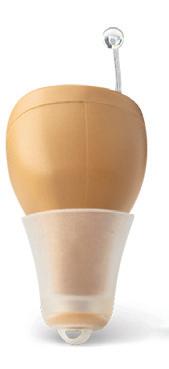



























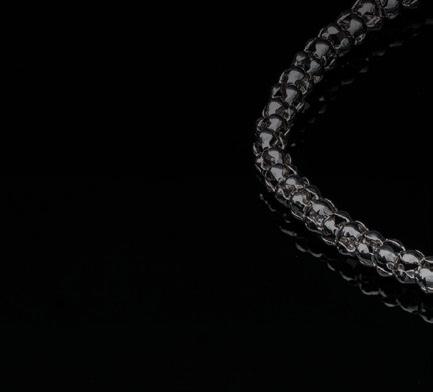




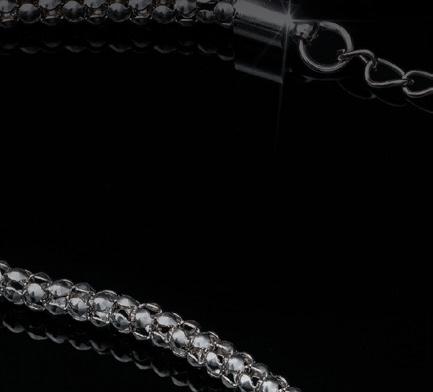









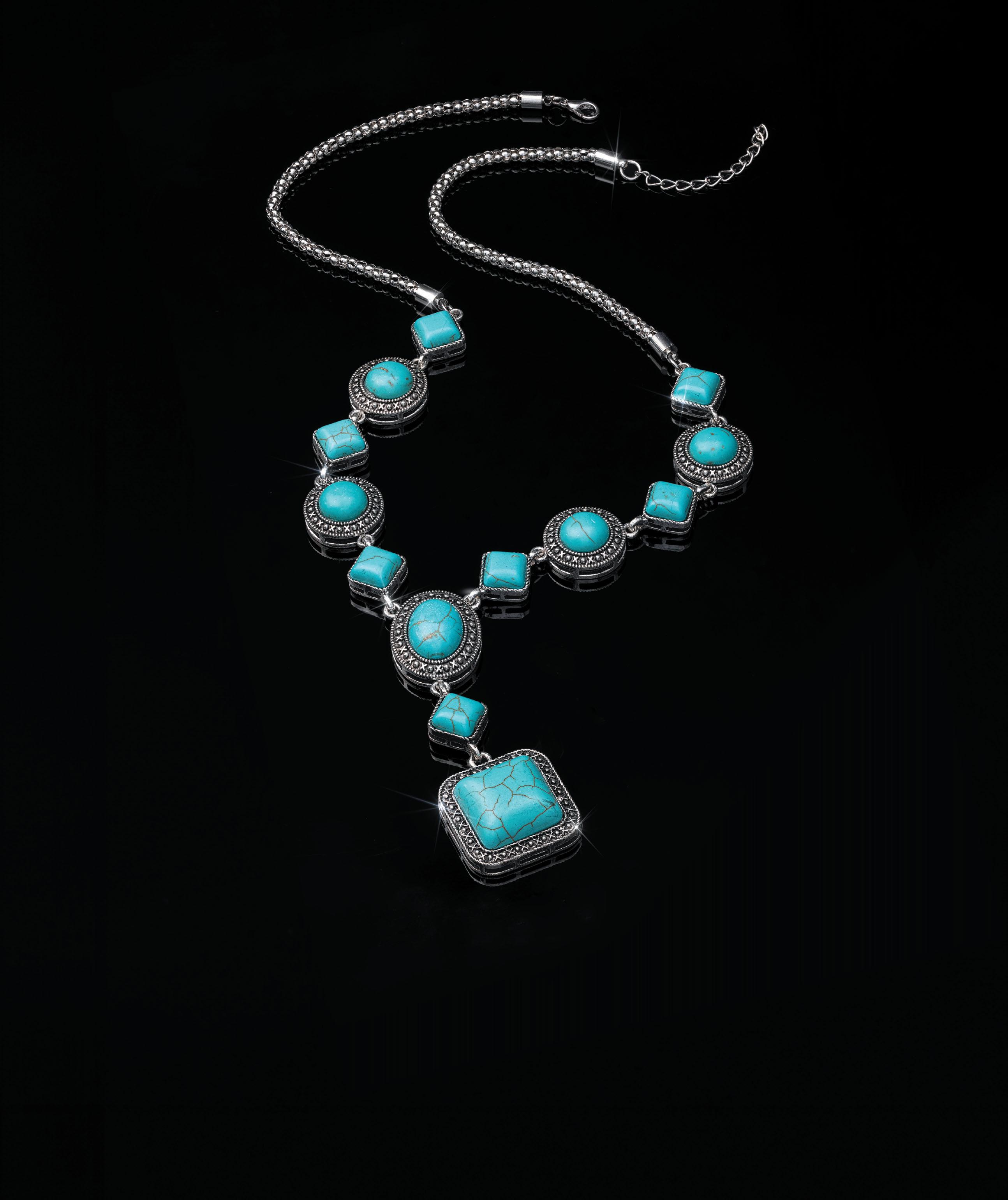








You may think you know what“priceless” means—usually, it just means “astronomically expensive.” But not at Stauer. Priceless means FREE.
Stauer is smashing luxury norms with our FREE 77-Carat Durango Howlite Necklace. at’s right—zero dollars.* is genuine howlite piece, valued at $299, is yours for FREE—just cover $24.95 for shipping and processing. Plus, we’ll send a $25 Discount Coupon, making shipping Better an Free! No tricks, no obligation—though resisting our luxury deals won’t be easy.
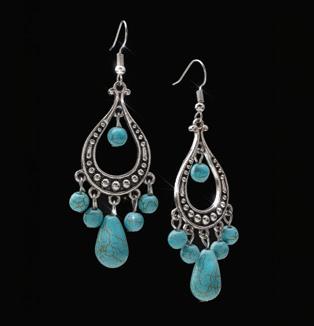

Why give away jewelry? Because once you see Stauer’s rare gemstones and vintage-inspired watches, we know you’ll fall in love. If not, keep your FREE necklace—no hard feelings.
Howlite, discovered in Nova Scotia, has been a gemologist’s secret, often compared to turquoise. Our Durango Collection channels classic Southwest jewelry, featuring blue-green beauty in oxidized silver settings. Get nearly 160 carats for just $79!
is deal won’t last—we only have 2,500 left. Call now to claim your FREE necklace and experience a new kind of priceless luxury!
Jewelry Speci cations:
• Enhanced howlite.
• Oxidized silver finish.











• Necklace: 23" + 2", lobster clasp.
• Earrings: 3" drop, French wire.
• Bracelet: 7", elastic.
Durango Collection— Call In Only
A. Necklace (77 ctw) $299 FREE* + S&P Save $299
B. Earrings (23 ctw) $199 $49* +
*Special price only for customers using the offer code.
This 8½-by-11-inch indexed cookbook features yeast breads, quick breads, scones and specialty breads for $10 (includes postage).
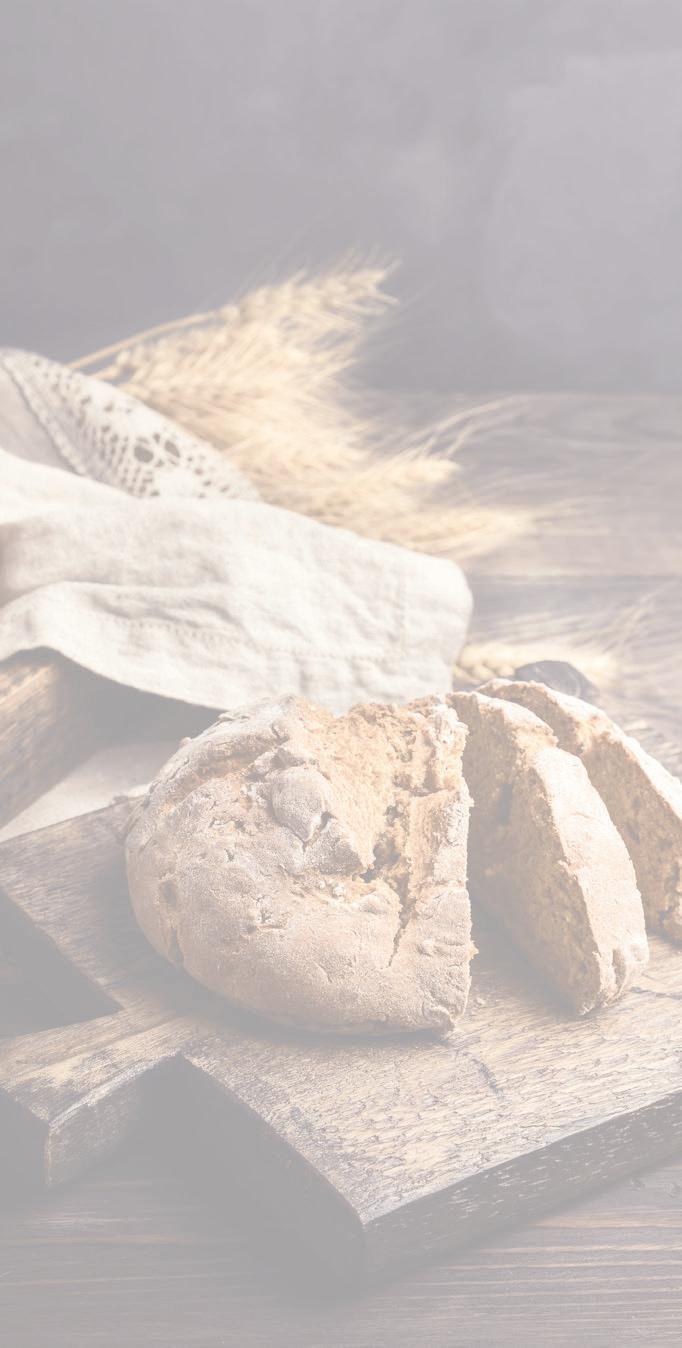
TO ORDER BY MAIL:
Submit payment with cookbook title, your name, address and number of cookbooks wanted to:
Ruralite Cookbooks
P.O. Box 1306
North Plains, OR 97133
TO PAY BY PHONE:
Call 503-357-2105 for credit card payments with Visa, MasterCard, Discover or American Express.
TO ORDER ONLINE: Visit www.ruralite.com. Please allow two to three weeks for delivery.
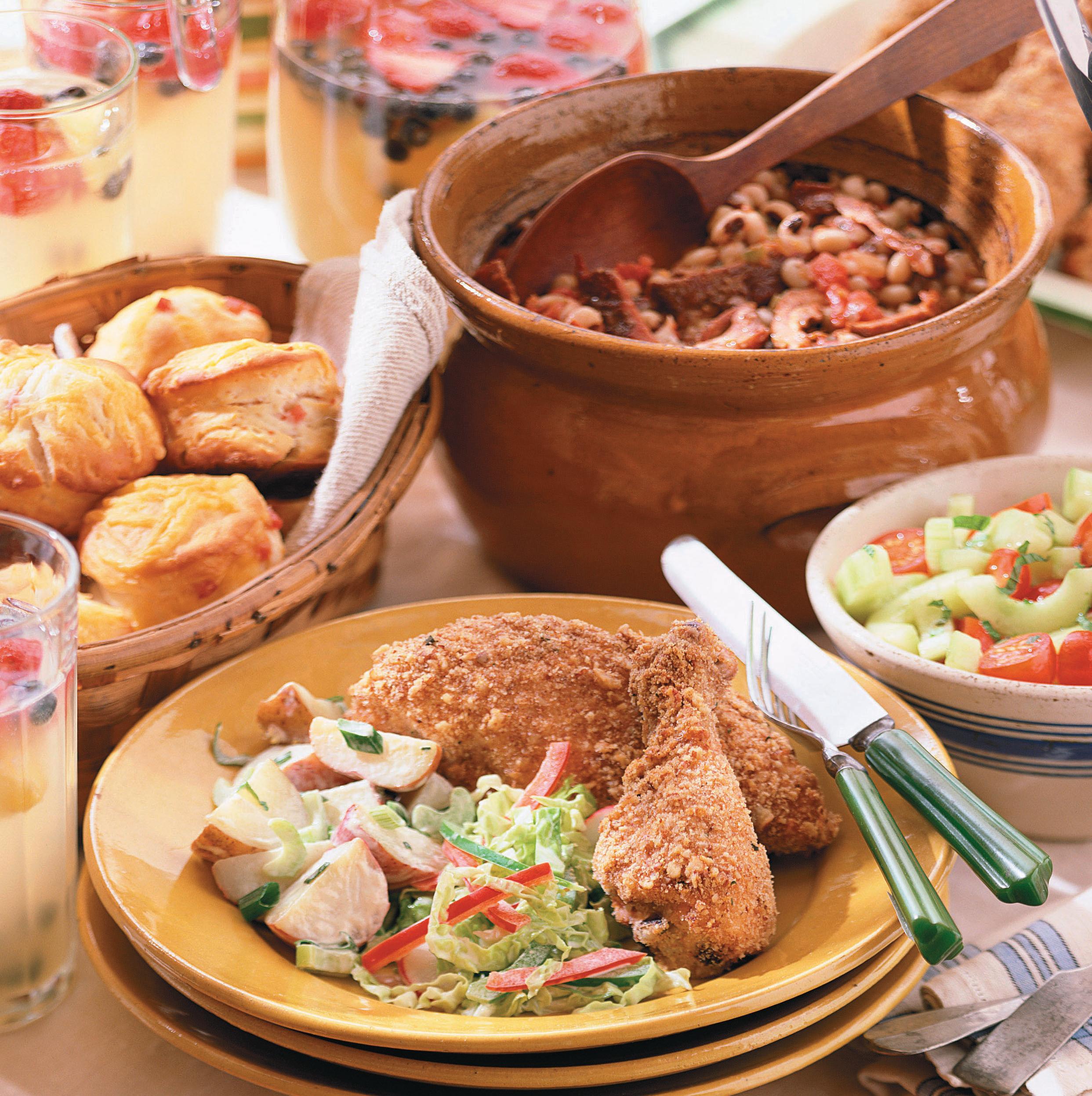
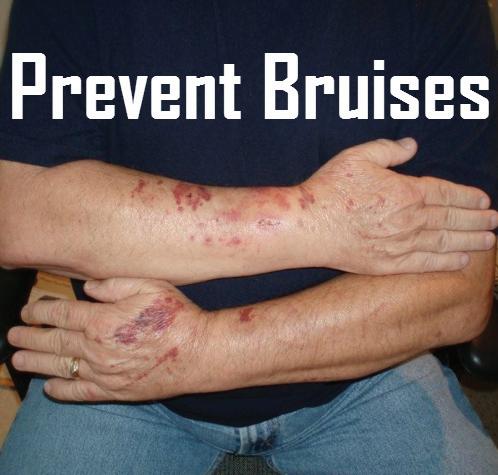

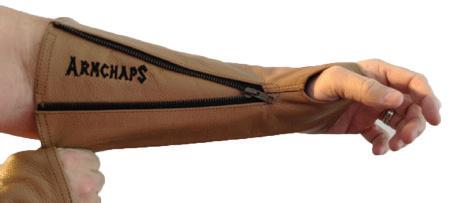
With more than 200 recipes, this cookbook from our 2007 contest offers options for potlucks, family reunions or picnics. As a bonus, additional pages feature previously unpublished barbecue recipes from a 2006 contest. The 8½-by-11-inch indexed book is $10 (includes postage).
Recipes submitted by Readers for the March 2007 Contest
TO ORDER BY MAIL:
Submit payment with cookbook title, your name, address and number of cookbooks wanted to:
Ruralite Cookbooks
P.O. Box 1306
North Plains, OR 97133
TO PAY BY PHONE: Call 503-357-2105 for credit card payments with Visa, MasterCard, Discover or American Express.
TO ORDER ONLINE: Visit www.ruralite.com.
Please allow two to three weeks for delivery.








4x5 round bales, Meadow foxtail orchard grass. 4x4 Timothy, small square. 208-4354637 or 208-435-4002; nas@cpcinternet.com. 1225
Reinforced custom-sized pond liners (39 cents/sqft). Hay covers, greenhouse covers, any width and length. Truck tarps and more. High puncture and tear strength. Best price guaranteed. Celebrating 43 years in business. www.btlliners.com. 541-447-0712. 0425
Buying antiques and collectibles: advertising signs, porcelain signs, gas pumps, beer signs, antique toys, cast-iron coin banks, neon signs and more. Jason, 503-310-3321 or tjabaughman@yahoo.com. 0925
Buying American Indian collectibles, Navajo blankets and rugs, baskets, beadwork, etc. Also, quality paintings of the early Southwest and Americas. Call 760-409-3117 or send photos to amer.ind.baskets@gmail.com. 0625
WC Collectibles. We buy comic books! Local to Inland Northwest. Willing to travel. WCCollectiblesCheney@gmail.com; 509-496-1835. 0525
1976 GMC half-ton pickup sitting for 20-plus years. Body good, runs when parked. Interior needs rehab. Reno, NV. $4.5K. Dale, 775-742-2989. 0425
Wanted: running board for 1928-29. AA express truck. 69 ¾” x 9 ½” with Ford script in middle. Allen Piquet, 541-571-4506; Piquetat1967@gmail.com. 0425
Health forces sale. Two-for-one: 1971 Ranchero and 1974 race car. Ranchero needs work; race car for parts. $1.75K. garyvavzycki@gmail.com. 0425
Books, Magazines, Videos
“The Bunny Book; What Would You Name a Book about Bunnies and God?” Bunnies learn about matches, separation, bullying, fear, death, God and more. 626-482-4955. 0425
Business Opportunities
Urgently needed: company that can raise up a foundation in Fairbanks, AK area. My house is sinking. John, alaskamoose@yahoo.com and 812-896-9951; or leave a voice message at 812-967-3220. 0425
Ads 25 words or fewer are $35 a month. An extended ad of up to 35 words is $50 a month. Contact information is included in the word count. Phone numbers and emails count as one word.
Longer ads may be placed. Contact 503-357-2105 or info@pioneer.coop for pricing information.
Ads are for customers of member co-ops, public utility districts and municipals only. Subscribers and nonmembers may inquire about pricing at 503-357-2105 or info@pioneer.coop.
Ads must be direct and in first person, and are subject to approval and editing.
Closing deadlines (in our office): June issue—April 30, 2025.
If submitting ad by mail, send appropriate payment with your name, address, email, phone number and the name of the electric utility that provides your magazine to: Marketplace, P.O. Box 1306, North Plains, OR 97133. Make check or money order payable to Ruralite.
We accept credit card payments for ads submitted by email. Send ad to info@pioneer.coop. Call 503-357-2105 to pay by
Advertisements are accepted in good faith. Pioneer Utility Resources is not liable for interactions between buyers and sellers.
Turnkey cafe, pizza, bakery in the picturesque town of Cedarville, CA. Newly renovated, fully equipped commercial kitchen, cozy dining and bar room, potential mini brew pub. Priced for quick sale, $225K. Shelia, 530-569-0529. 0425
Community Events
Eastern Oregon University student art exhibit, plus work by artist Genevieve Gaudreau Thompson. April 4-26. Art Center East in La Grande, OR. artcentereast.org. 0425
Equipment/Tools
Farmi JL 300 logging winch, small woodlands, $1K. 13 push-pull control cables, $50 each. 60 16-inch nylatron and steel sheaves, 1/2-inch rope, $50 each. 4-ft. tow-behinds, Land Pride mower, $800. Kubota rototiller, near new, $1.5K. Ted, 458-910-3727. 0625
Free materials—church, government uniting, suppressing “religious liberty,” enforcing National Sunday Law. Be informed. Need mailing address only. TBS, P.O. Box 374, Ellijay, GA 30540. tbsmads@yahoo.com; 888-211-1715. 0625AR
The Wheat Land Communities’ Fair in Ritzville, WA, is seeking a reliable and responsible summer groundskeeper/camp host. Responsibilities include mowing, watering, general maintenance, overseeing the campground and other duties as needed. Would ideally be on-site May through midSeptember. Full hook up provided. Contact Dan at skamaniadan@gmail.com or mail a letter of interest to, P.O. Box 14, Ritzville, WA 99169. 0425
Foster parents needed to care for teen youth in Wasco and Hood River counties. Agency provides on-call support, training, $2.1K/youth monthly reimbursement, 2 days off/month. Fosterinfo@nextdoorinc.org; 541-308-2207. 0625
Local commercial fisherman sells summer catch of preserved freshness by blast freezing at sea, gourmet canned tuna on internet. Sept.June. 100% guaranteed the best canned tuna you ever tasted. Original, jalapeno and garlic flavors available. To order: twofisherstuna.com or 206-799-1082. 0525
By Courtney Cobb and Thomas Elzinga
It’s time to spring forward with savings, and Central Electric Cooperative has rebate programs to help you do just that.
The window and weatherization program can help improve energy efficiency, control heating and cooling costs, and increases comfort levels for members with older, electrically heated homes. Options include increasing insulation levels, replacing single-pane and double-pane metal frame windows, installing Energy Star-qualified exterior doors, and air sealing.
Typically, a member’s site-built home’s construction date must be pre-1992 to qualify. Most houses built post-1992 are weatherized as required by Oregon’s building codes. Any age of manufactured home may be eligible.
CEC offers a rebate of $200 to $2,500 on a heat pump’s cost, depending on the system being installed and replaced. New and existing homes can qualify, and installation contractors must meet CEC requirements. Members can qualify for an additional $350 to $750 duct sealing rebate if ductwork hasn’t been sealed yet.
CEC offers a $300 or $1,000 rebate for qualifying water heaters. New or replacement installations apply.
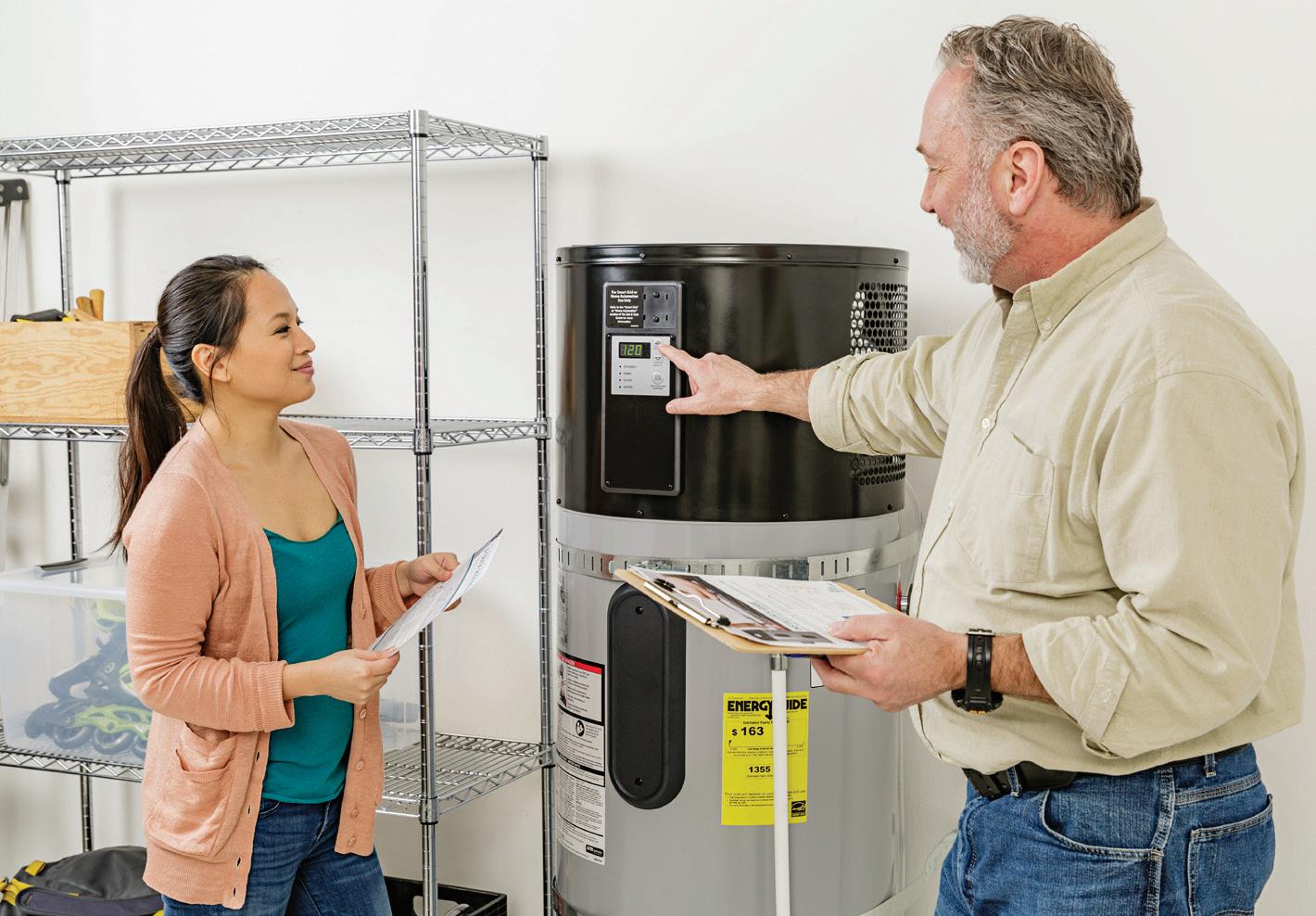
If you bought a new Northwest Energy Efficient Manufactured Housing Program Energy Star home, you can qualify for a rebate. Depending on the efficiency level selected, CEC offers a $1,500 or $2,500 rebate.
CEC offers a $140 rebate for upgrading to a qualified smart thermostat in your electrically heated home. For a complete list of qualifying thermostats, visit our website.
CEC offers a $40 or $80 rebate for replacing your washing machine and dryer with an Energy Star model. Restrictions apply, so visit our website for more details.
CEC believes every member and home should benefit from greater energy efficiency.
The income-qualified program can provide eligible CEC members free to lowcost home weatherization, a high-efficiency heat pump, a heat pump water heater, and a clothes washer and dryer. The program is for renters or homeowners and covers sitebuilt or manufactured homes.
X More than 1,200 Central Electric Cooperative members received a rebate.
X More than $1.4 million rebate dollars were distributed.
X More than 55 families received free home energy upgrades through CEC’s incomequalified program.
X An EV charger or outlet was installed in 111 homes. There are more than 1,400 EVs in CEC members’ homes.
X Solar was added to the homes of 69 CEC members and added enough generation to power 69 homes for an entire year.
CEC gives a $50 rebate for each EV registered at a CEC-served location, $150 for an EV outlet and $250 per EV charger.
CEC offers rebates to irrigation accounts that install new pumps, retrofit pumps with variable frequency drives and upgrade to precision sprinkler systems.
CEC’s energy programs are subject to change without notice. For specific eligibility requirements, refer to www.cec.coop under the energy-efficiency or electric vehicle tabs or contact an energy specialist at 541-5482144 and select option 6.

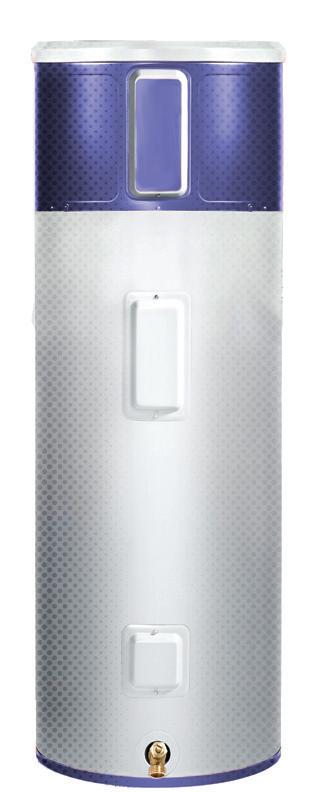
On a hot July day, Wren Zielinski took her turkey, Mr. T, to the Linn County Fair in Albany, Oregon. Wren raised the turkey from a tiny 1-day-old poult in the spring until he was a full-grown tom ready for the summer fair.
As the two enjoyed the cool breeze from nearby fans, Wren’s mom, Katie, took a photo of them.
“I’m not sure what she was thinking at that moment or what Mr. T was thinking either, but they seemed so content,” Katie says. To submit your photo, email a JPEG file to photos@pioneer. coop. Include “Before You Go” in the subject line. Please share a bit about what inspired you to make your photo. n

Make Your Driveway Like New with a DR® Power Grader
• Fill in potholes and smooth out washboards
• Loosen and redistribute existing material

• Tow with your ATV, UTV, or tractor
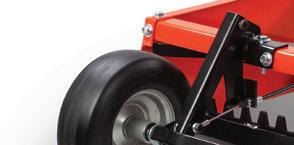
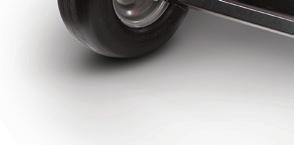

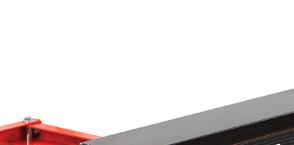

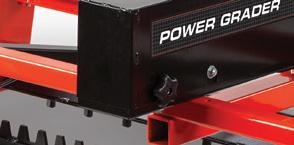
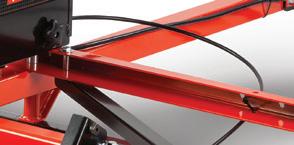
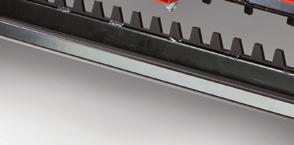
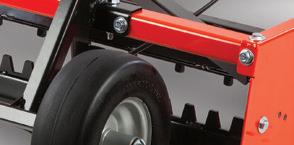

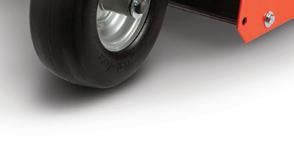



Chippers Help You Clean Up and Clear Out







• Chip and shred with power to spare
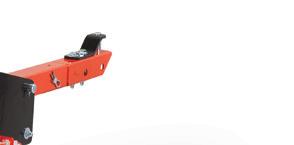
• Annihilate thick branches and reduce yard waste


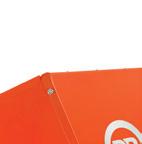









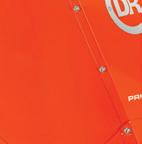


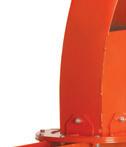
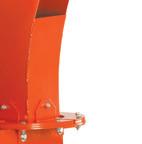


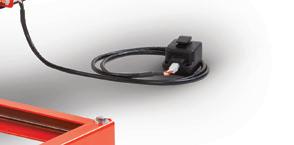
• Easy to move easy to use—large wheels and easy towing


• Built USA tough





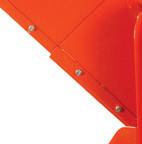









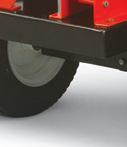
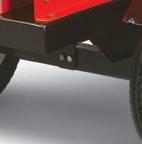
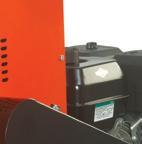

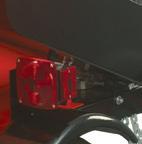
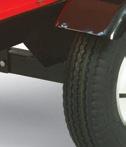


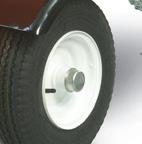

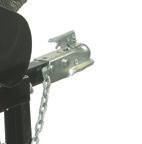
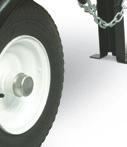

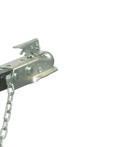











































































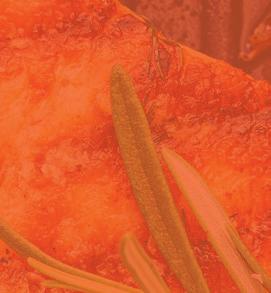

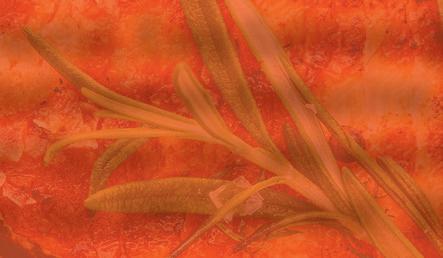






















Discover all 13 of our Recipe Contest cookbooks. Each is 8½-by-11” with index. Prices shown include postage and tax.
Please allow two - three weeks for delivery; include your email address if you would like a shipping confirmation.











Central Electric Cooperative DIRECTORS
Chairman Kip Light, Madras
Vice Chairman Kelly McFarlane, Powell Butte
Secretary/Treasurer Kenneth H. Miltenberger, Alfalfa
Mark Christie, Sisters
Beverly Clarno, Redmond
Boyd Keeton, Tumalo
Sam McKenzie, Prineville
Dan Steelhammer, Bend
Tom Strand, Terrebonne
Attorney Thomas M. Grim
Cable Huston LLP, Portland STAFF
President & CEO
Brad Wilson
Vice President of Finance & Accounting
Shane Morgan
Vice President of Operations & Engineering
Kevin Rohde
Vice President of Information Services
Phillip Franklin
Vice President of Member & Public Relations
Brent ten Pas
Vice President of Customer & Energy Services
Ryan Davies
24-HOUR PHONE NUMBERS:
Call 541-548-2144 or toll-free 800-924-8736.
Mission Statement
The aim of Central Electric Co-op is to make electric energy available to its members at the lowest cost consistent with sound economy and good management.
The board meets the third Thursday of each month at the CEC office, 2098 NW Sixth St., Redmond, OR. www.cec.coop
